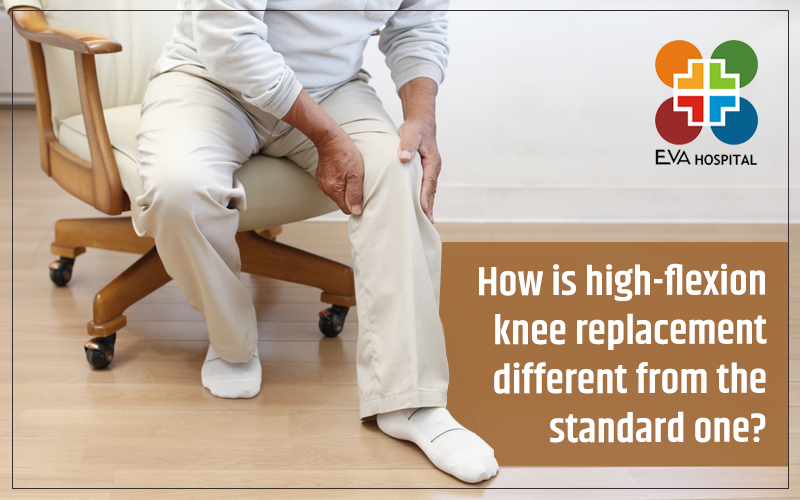
Total Knee Replacement: What are the Risks, Recovery and Exercises?
The acute pain in the knee and the discomfort, while moving about and getting up from a low rise chair, are signs of knee trauma.
Patients who suffer from osteoarthritis and may be aging symptoms are the ones who need to seek surgical help.
The patient needs to consider Knee Replacement surgery or Knee Arthroplasty to relieve the pain and restore the normal functioning of the knee.
What is Total Knee Replacement?
The Total Knee Replacement (TKR) surgery is where the damaged parts of the knee joint are replaced with artificial or manmade joints.
This surgery is done for people who are elderly suffering from arthritis or knee trauma or any destructive disease of the joint which leads to stiffness and pain in the knee.
Following are the symptoms which the doctor may check for before considering Total Knee Replacement:
- Wear and tear in the knee
- Damaged cartilage around the knee due to injury
- Arthritis or Rheumatoid Arthritis in the patient
- Pain, swelling, and stiffness in the knee.
- Bowed in or out knee
- Severe pain, even when you are resting
What are the Risks of Knee Replacement Surgery?
With advanced techniques of the surgery, total knee replacement is a common bone surgery and the patient can add years to his life. However, the following are the consequences of the surgery:
-
Complications from Anesthesia
Vomiting, dizziness, shivering, sore throat, aches, and discomfort are the immediate side effects of anesthesia.
Anesthesia may lead to adverse reactions like dental trauma, wheezing, stomach problems or even injury to arteries, veins, and nerves.
-
Blood Clots, Wounds, and Bleeding
The sutures or the stitches may not heal and the wound may lead to bleeding complications with blood thinner medicines. On the other hand, you may get Deep Vein Thrombosis (DVT) where clots in blood vessels are formed.
-
Infection
Because of the altered immunity system after arthritis or diabetes, chances of catching infection post the knee replacement surgery are higher. Sometimes patients contract infection within 90 days of surgery.
-
Transfusion Complications
In the case of blood transfusion, chances of complications are higher because of incompatible blood matches. In the rarest of cases the blood group or blood infected with the illness, infections may be infused in the patient, thereby making the patient sick.
-
Allergy to Metal Components
People who are allergic to the metal used in the knee are likely to have a tough time. It is imperative to discuss any kind of allergies you have prior to the surgery.
-
Nerve Damage
The patient might suffer from neurovascular damage where the muscles leading to the foot start feeling numb initially after the surgery.
Dr. Tanveer Bhutani, Punjab’s leading orthopedic surgeon, specializing in knee replacement surgery, states that these complications are not mandatory in every case. The skill and finesse in the hands of an experienced surgeon may bring these down to a minimum.
How much Time does the Recovery take in TKR?
Dr. Bhutani says he makes sure the patients start the movement and slow walking on the same day as surgery. The hospital stay may vary between one to three days. The patient can be discharged on the same day or a day after.
The daily chores and routine can commence within 3 to 6 weeks. However, it may also take almost one year to fully realize the benefits of knee surgery.
What are the Exercises that help In the Recovery of TKR?
“Regular exercise and physiotherapy are mandatory requirements for effective recovery after total knee replacement surgery”, says Dr. Bhutani. After the surgery, an efficient orthopedic surgeon will explain the exercises and postures so that the strength of the knee can be recovered.
Apart from consulting a physical therapist, there is a range of exercises to be done at home. Following are a few exercises that help in quick healing and better functioning of the new knee:
-
While resting
You must lie down for at least 20 minutes with the surgical leg at or above the heart for at least 20 minutes. This can be done using pillows beneath the leg and this prevents swelling.
Applying ice packs for about 15 to 20 minutes a day while resting and elevating can be of great help in preventing swelling.
-
Exercises
The surgeon may prescribe a range of muscle pumping exercises like circling the ankle and pumping the feet up and down. Knee straightening exercises while sitting down, sitting knee flexion (knee bending), quadriceps (thigh squeezes), hip and knee flexion (heel slides) and short arc quadriceps are a few sets of exercises to be done on daily basis.
-
Walking
Walking around the house is equally important as the exercises and you must aim to increase the distance eventually. This will help in building strength and endurance.
Conclusion
If walking or climbing stairs is getting tougher, total knee replacement is the answer to all the problems. With efficiency in surgical hands, proper care, and exercises, the recovery after the surgery will be swift and you can resume your daily activities after the surgery soon. For a successful surgery or any queries and doubts, contact the best knee replacement surgeon Dr. Tanveer Bhutani, EVA Hospital.









